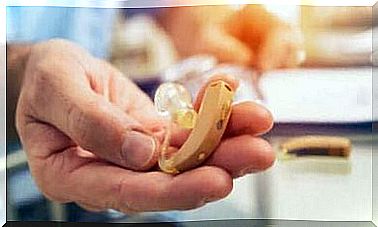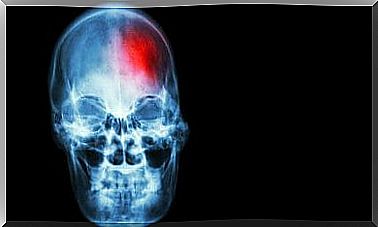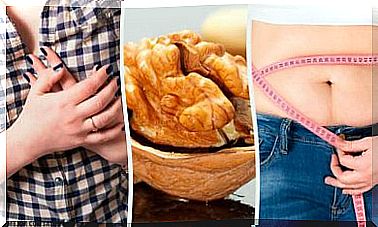All About Preeclampsia: A Complication Of Pregnancy

Preeclampsia is a pregnancy complication that can be caused by hypertension or kidney damage. It affects 5-8% of pregnant women and can be very dangerous for both mother and baby.
Preeclampsia usually manifests itself in the last trimester. However, it can also manifest during childbirth, the second half of pregnancy, or even in the first weeks after birth.
This condition can be mild or severe. Furthermore, if not treated properly or in a timely manner, it can lead to more serious conditions, such as eclampsia or HELLP syndrome.
Why does preeclampsia occur?
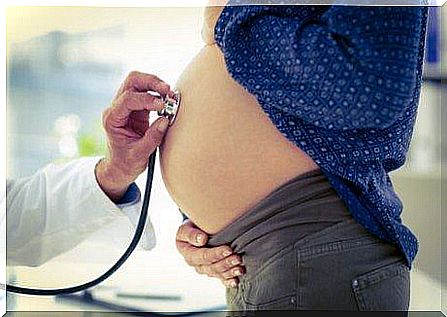
Pregnancy poisoning is manifested due to reduced blood supply to the placenta. Then the placenta will not attach properly to the uterine wall, and the arteries in that area will not spread as they should.
Chronic hypertension and diabetes can also reduce blood flow to the placenta. Some professionals believe that preeclampsia manifests itself in early pregnancy, although the symptoms develop later.
The symptoms of preeclampsia
Some women diagnosed with preeclampsia do not develop characteristic symptoms. Similarly, not all women develop the same symptoms.
The main problem is that some of the symptoms of preeclampsia, such as nausea or swelling, can be interpreted as common pregnancy symptoms .
This is why doctors should know how to recognize the warnings of this complication effectively and in a timely manner.
These are:
In the case of mild preeclampsia
- Hypertension
- Fluid accumulation
- Protein in the urine
In case of severe preeclampsia
- Headache and blurred vision
- Inability to withstand strong light
- Fatigue, nausea and vomiting
- Reduced urination
- Pain in the upper abdomen, usually on the right side
- Gets bruises easily
It is very important to remember that not all women with preeclampsia suffer from visible swelling or drastic weight gain. In addition, not all women who suffer from these symptoms have preeclampsia. The symptoms, as mentioned above, can be confusing.
Risk factors for preeclampsia
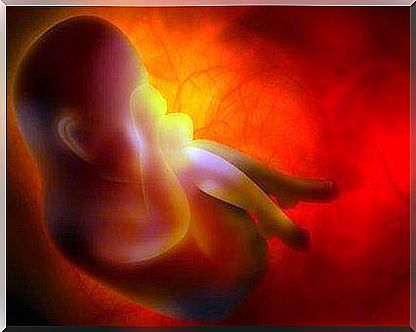
Obesity, diabetes and hypertension are the main risk factors associated with preeclampsia.
Many other factors can also increase the risk of this condition. If this is the pregnant woman’s first pregnancy, she has previously had hypertension or kidney disease, or has a family history of preeclampsia, the risk of suffering from it will be greater.
Similarly, women with multiple pregnancies, women who have previously had gestational hypertension or preeclampsia, or women who have a BMI of 30 or higher, also have a higher risk. Pregnant women under the age of 20 or over 40 may also develop preeclampsia more easily.
Prevention
Through regular prenatal checkups, your doctor will monitor and measure:
- Blood pressure
- Urine level
- Blood tests
In addition, there are other ways to check for the occurrence of this problem, such as:
- Test to check for blood clots and kidney function
- Sonography
- Doppler ultrasound
Regardless of these tests, there is no sure way to prevent this condition, because not all the factors that contribute to manifestation can be controlled.
Therefore, health professionals often recommend eating a balanced diet and exercising regularly, as well as getting regular medical checkups.
Treatment

Periodic prenatal check-ups allow early detection of this complication and many others.
Treatment depends on the stage of pregnancy. If the condition manifests itself close to the due date and the baby has developed, healthcare professionals are likely to start the birth as soon as possible.
If the preeclampsia is mild and the baby is not developed, treatment will be based on increasing prenatal checks. In addition, your doctor will ask you to incorporate more protein into your diet.
It is also important to consume less salt and drink plenty of water. Finally, it is important to get plenty of rest. The patient should lie on the left side to move the baby’s weight away from large blood vessels.
If a woman suffers from severe preeclampsia, in addition to the above treatments, health professionals can prescribe drugs to control blood pressure.
Preeclampsia is an important pregnancy complication that can compromise the life of the mother and her unborn baby. Therefore, living a healthy lifestyle, especially during pregnancy, as well as regular prenatal checkups, are the best ways to prevent it.

